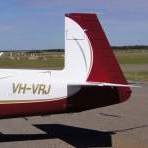-
Posts
685 -
Joined
-
Last visited

Mooney in Oz replied to PT20J's topic in Avionics/Panel Discussion

Mooney in Oz posted a topic in Mooney Safety & Accident Discussion

Mooney in Oz replied to 0TreeLemur's topic in Mooney Safety & Accident Discussion

Mooney in Oz replied to PT20J's topic in Avionics/Panel Discussion

Mooney in Oz replied to PT20J's topic in Avionics/Panel Discussion

Mooney in Oz replied to PT20J's topic in Avionics/Panel Discussion

Mooney in Oz replied to LANCECASPER's topic in Mooney Safety & Accident Discussion

Mooney in Oz replied to RescueMunchkin's topic in General Mooney Talk

Mooney in Oz replied to Mark89114's topic in Avionics/Panel Discussion
We have placed cookies on your device to help make this website better. You can adjust your cookie settings, otherwise we'll assume you're okay to continue.